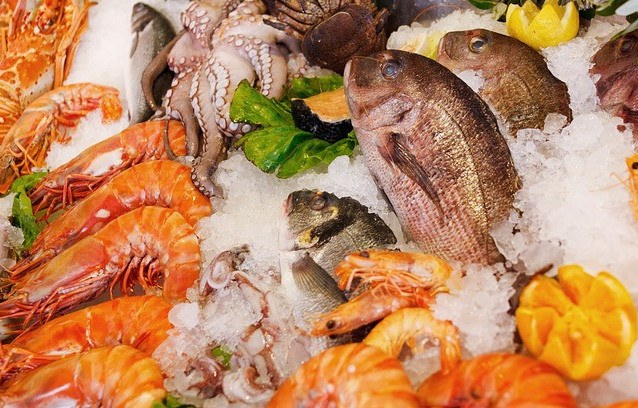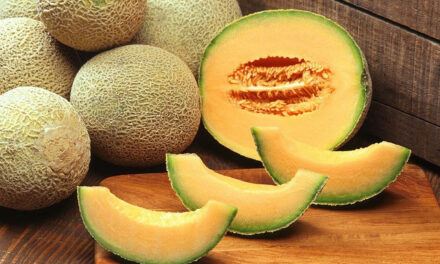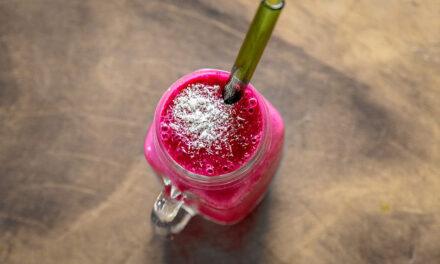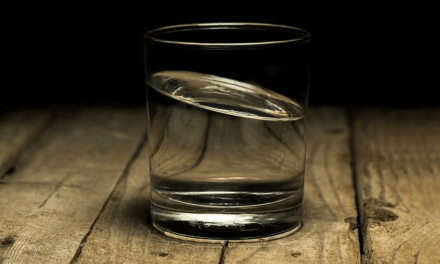Here we cover seafood and diabetes. Many questions will be explored here, such as what seafood is good for diabetics? What seafood is bad for diabetics?, and what to look for in seafood before consuming…etc.
For people with diabetes, choosing food can be really challenging.
Managing diabetes, most time, requires extra effort like getting more exercise, subscribing to special medications, having to monitor your blood glucose levels, etc.
Many researchers have discovered that an easy way to improve your health when you have diabetes is to take enough seafood diets.
Some kinds of seafood are very much abundant in some locations and scarce in others. There are different varieties of seafood, but sometimes it requires the intervention of an expert for proper identification.
Not all seafood is meant to be consumed because of their importance to aquatic life.
Where the problem lies most times is trying to identify the best types of seafood we should consume, especially with diabetes.
Some seafood has amazing health benefits based on its nutritional contents. Some of this ‘healthy’ seafood usually contains omega 3 fatty acids, protein, and less fat. Other seafood can also have harmful content like mercury.
This means that you have to be meticulous while choosing seafood so as not to select the one that will cause harm.
This article will guide you through the best and worst types of seafood to consume as a diabetic, what to look out for when purchasing them, and how best to pick the most important to you.
Before anything, let’s define seafood.
What is Seafood?
Seafood can be defined as forms of sea life that humans consider as food. They are regarded as a very important source of protein in many diets around the world and are most abundant in coastal areas.
Modern day seafood is gotten by harvesting, and the process of harvesting is known as fishing or hunting. Cultivating and farming seafood is known as aquaculture and fish farming.
Humans consume the majority of the seafood harvest. The minority or leftover is used for feeding farm animals and other plants.
Some seafood can be fed to aquarium fish or also fed to domestic cats.
It can also be used in medicine or for nonfood purposes like making leather.
Types of Seafood
There are different types of seafood, but they are generally classified into three, which include fish, shellfish, and roe.
- Fish
Types of fishes include Cod, Salmon, Trout, Tuna, Haddock, Sea bream, Plaice, Shark, Anchovies, Barracuda, Basa, Bass, Blowfish, Black cod, Bluefish, Bombay duck, Bream, Brill, Butterfish, Catfish, Dogfish, Dorade, Eel, Flounder, Grouper, Haddock, Hake, Halibut, Herring, Llish, John dory, Lamprey, Lingcod, Mackerel, Mahi-mahi, Monkfish, Mullet, Orange roughy, Parrotfish, Patagonian toothfish, Perch, Pike, Pilchard, Pollock, Pomfret, Pompano, Sablefish, Sanddab, Sardine, Sea bass, Elt, Sole, Sprat, Sturgeon, Surimi, Tilefish and many more…
- Shellfish
Shellfish include species of mollusks like cockie, cuttlefish, clam, loco, mussel, octopus, oyster, periwinkle, scallop, squid, conch, nautilus, crustaceans like crabs, craw, lobsters, shrimps, and echinoderms like sea cucumber.
- Roe
Caviar (sturgeon roe), ikura (salmon roe), kazunoko (herring roe), lumpfish roe, masago (capelin roe), shad roe, tobiko (flying-fish).
Health Benefits Eating Seafood For Diabetics
As a person with diabetes, eating seafood is highly beneficial for your health for various reasons.
Some of these reasons include:
- There is no carbohydrate in seafood
Diabetes usually develops when the body lacks insulin. Insulin helps to convert glucose to energy.
When this happens, it will lead to a build-up of glucose in the blood. This usually leads to adverse consequences like heart disease, kidney disease, and nerve damage.
This explains why seafood, especially fish, is highly recommended for people with diabetes.
- Trans fat has low Trans and Saturated Fats
People with diabetes are better off when they avoid foods that contain fats, as it will reduce the risk and chances of being obese. It will also help you maintain a healthy body weight, a good heart rate, and also have a low or moderate cholesterol level.
Seafood stands out when compared to other meat products because they have a low level of Trans and Saturated fats, so it will greatly reduce the risk of complications associated with diseases.
- Seafood has omega 3 fatty acid content
Some fatty acids are very efficient in fighting cholesterol, high blood pressure, and heart diseases. An example of this fatty acid is omega 3 fatty acid. This is why seafood is highly recommended.
Seafood will be a huge plus for people with diabetes and those hoping to prevent the aforementioned diseases.
6 Seafood Good for Diabetics
As a person with diabetes, some types of seafood have no health benefits other than others. This type of seafood will be very good for you as a person with diabetes.
- Salmon provides Heart-healthy Omega 3 fatty acid
Salmon is widely recommended because of its high content of omega 3 fatty acid, and this makes it ideal for people having type 2 diabetes.
For people with type 2 diabetes, salmon will help them reduce their risk of getting some health complications like heart disease, heart failure, and stroke.
The American Heart Association (AHA) recommends that taking two servings of fish will increase your chances of avoiding those diseases.
Salmon offers you a variety of options when preparing it.
Some of these cooking options include baking, broiling, stewing, and even roasting.
In order to get the maximum health benefits that come with salmon, you can prepare or coat it with olive oil, lemon juice, garlic cloves, chopped basil, etc., always ensure that whatever ingredients you will use are heart-healthy and very safe for people who have diabetes.
- Tilapia has a high content of protein and little fats.
US Department of Agriculture estimates that a steamed small fillet of tilapia contains 137 calories and 28.5 grams of protein. This shows that tilapia fish is very low in calories and has a high protein content.
One very good advantage of tilapia is that it is very easy to find and preparation is quite easy too.
You can prepare it in a variety of ways that soothes your taste. However, you should bear in mind, that tilapia cooks easily, so you should be very careful not to overcook it.
Also, ensure that you use healthy ingredients like sauteing onions, peppers, canned tomatoes with low sodium, etc. this will enable you to get the maximum benefit that comes with tilapia fish.
- Cod fishes contain low calorie and high protein
Cod fish also have low fat and high protein content. It has been estimated that steamed codfish contains about 149 calories and 32.6g of protein.
Also, codfishes have a very small amount of saturated fat and omega 3 fatty acids. This will help reduce the risk of some health problems like heart diseases, etc.
Codfish can withstand more sharp or aggressive cooking like grilling compared to other fish like tilapia.
You can cook your codfishes with onions, broccoli, mushrooms, or even asparagus. You can go ahead and prepare your cod by cutting them In chunks and turning to add your favorite vegetables.
- Trout provides Heart-healthy fatty acid
Fish with high omega 3 fatty acids is most preferably recommended. This is because of the numerous health benefits that omega 3 fatty acid contains.
Trout is very high in omega 3 fatty acid making it a good choice, especially for people with diabetes.
If you are still learning how to prepare or cook seafood adequately, you must avoid adding too much salt. The American Health Association recommends that the normal level of salt per day should be around 2300mg per day or 1500mg per day.
Just have in mind that every fish variety has a unique flavor, so when preparing trout fish, you must find the flavor unique to trout.
- Shrimp helps to control calorie
Shrimp is recommended for fish lovers because it is low in calories.
In addition to being low in calories, it also has a high protein content. However, as a person with diabetes, you might want to avoid shrimp.
Despite it being low in calorie, the calorie it contains may not safe for people with diabetes. A serving of shrimp contains 120 calories, and 23g of protein. So, if you are trying to avoid high cholesterol, then you should avoid shrimp.
This is because dietary cholesterol might increase the LDL cholesterol, invariably increasing the chances of getting a heart attack.
- Canned Tuna and Salmon
If you are very busy or don’t have means of getting freshly prepared seafood, you can go for the option of canned tuna and salmon.
Usually, fresh or frozen seafood is a very delicious addition to your diet as a person with diabetes.
The only challenge you might have is that they are usually expensive. However, Tuna and Salmon are fairly affordable when you compare them to other seafood.
If you are among the category that barely includes enough seafood in your diet, having 2-3 servings of canned Tuna and Salmon a week may help you meet your fish goals.
What Seafood is Bad For Diabetics?
It is very difficult to say good or bad fish because of the highly nutritive content of fish. Nevertheless, there are still some not-so-good fish.
Some fish have been found to contain high levels of mercury. Examples of such fishes include sharks, swordfish, marlin, and tuna.
Although the level of mercury present in these fish has not been completely confirmed dangerous, people with diabetes who are pregnant must avoid them.
Also, diabetics who are breastfeeding should stay away from it. Canned tuna, although it contains mercury, can be taken in moderate quantity.
Also, as a person with diabetes, if you usually have fish and other seafood allergies, you should moderate how you consume them. The allergies that are commonly associated with seafood include nausea, sickness, stomach cramp, and diarrhea.
Also, raw seafood can be bad for diabetics.
When you take any seafood raw or uncooked, there are high chances of you getting food poisoning. Some seafood like oysters are usually served raw, so taking them exposes you to food poisoning.
5 Seafood Bad for Diabetics
Having listed the wonderful benefits of seafood, it will be almost unbelievable to think that it can ever be harmful or bad for our health sometimes. Nevertheless, there are a whole lot of things that can render seafood unhealthy, especially for people with diabetes.
It can be from the species of the fish or, most times, from its preparation.
- Fish and chips
Everything used in making fish and chips is deep-fried.
As a diabetic, it is very much important for you to avoid fries as much as possible.
Also, the fish and chips are usually served with accompanying tartar sauce or even ketchup. This tartar sauce and ketchup add more fat, sugar, and calories which is harmful to the health of people with diabetes.
If you must eat fish and chips, you can try serving it with a cornflake crunch to help you control the amount of oil.
- Swordfish
Swordfish is very notorious for its high content of mercury. The sad thing is that no matter how you prepare it, the mercury contents hardly reduce.
Mercury is not health-friendly because it can damage the brain and kidneys. Adding brain and kidney complications to a diabetic is not welcoming at all.
Also, for people with diabetes who are pregnant and for pregnant women generally, it can hurt the unborn baby.
Mercury should be avoided by anybody with a weak immune system too.
- Sushi
Sushi is meant to be great because of its high content of omega 3 fatty acids and also lean protein. It also has fewer fats, sugar, and calories.
So, what could then be the problem with the eating issue? Most raw fishes need to be handled by experts because it contains bacteria and parasites. These bacteria and parasites don’t usually get cooked away, so it requires the attention of an expert. So coming to you, you don’t exactly know who or how the sushi you might want to eat was handled.
- Sharks, Skates, and Rays
This variety of fish is usually very high in mercury. Mercury consumed over a long period causes damage to kidney and brain health.
- Orange Roughy
Orange Roughy is a fish that takes a very long time to mature. Generally, fishes that don’t mature over a long period tend to accumulate a lot of mercury.
Conclusion
We have carefully listed the various types and varieties of seafood and their benefits. As a diabetic, you are very much free to enjoy your favorite seafood but ensure that they are safe for you.
If you are trying to stay away from cholesterol and fats, then you have to check to stay away from high-fat fish.
It is also good to generally stay away from seafood that is high in mercury, as this will help protect your kidney and brain health.
Also, for healthy and safe cake, you should try to get your seafood from trusted chefs and experts, to reduce your risk of eating bacteria-infested food, which will further cause harm to you.
If you notice that you are reacting to any type of seafood, it doesn’t necessarily mean that you are allergic to fish. It could be that you are allergic to that particular species you reacted to. You just need to try out other species.















